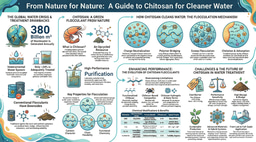The origin and evolution of woolly rhinoceros in the view of ancient DNA
Published in Ecology & Evolution
The rhino family once evolved into at least 100 species, inhabited from Africa across Eurasia to America, while only five critically endangered species surviving at present. Among the extinct rhino species, woolly rhinoceros (Coelodonta antiquitatis) is the most well-known one, which became extinct at the end of the Late Pleistocene. Woolly rhinoceros is an advanced species of the genus Coelodonta. The earliest representative of this genus, Coelodonta thibetana (~3.7 million years ago, Ma), originated in Qing-Tibetan Plateau, Southwestern China, then gradually evolved into different cold-adapt forms in Northern China since the start of Ice Age. Woolly rhinoceros is generally suggested as a typical indicator taxa of cold environments, and once widely distributed in Northern Eurasia during the Late Pleistocene. Unlike mammoth, it failed to cross the Bering Land Bridge from Eurasia into North America.

Figure 1. Parts of unearthed woolly rhinoceros remains from Ulanmulun Paleolithic site, Inner Mongolia, Northern China. Credit: Lei Bao
Northern China is famous for “Mammuthus-Coelodonta faunas” during the Late Pleistocene, and abundant woolly rhinoceros fossil materials have been excavated from the Late Pleistocene strata in this region. Given the early members of the genus Coelodonta originated in Northern China and numerous woolly rhinoceros remains excavated in this region, Northern China holds a crucial importance in the evolutionary history of this genus. Paleontologists carried out a series of exploration on fossil materials of Coelodonta in terms of morphological analyses, and previously proposed that Chinese woolly rhinoceros possibly descended from its Siberian relatives.

Figure 2. Qinggang County, Heilongjiang Province——one of the most important fossil localities of “Mammuthus-Coelodonta faunas” in China. Credit: Bo Xiao
In recent years, the rapid development of ancient DNA technologies, especially the metagenomic technology, have greatly increased the length of obtained sequences, making it possible to retrieve whole genomes from fossil materials. Until present, the outcomes of paleogenomic studies have fundamentally changed our understanding of the evolutionary history of many extinct/extant species. Especially, woolly mammoth, as one of the iconic members of “Mammuthus-Coelodonta faunas”, has become a model species for ancient DNA study due to its widespread distribution in Northern Hemisphere, while woolly rhinoceroses has received far less attention in the molecular level.
Our team has been dedicated to DNA studies of Chinese Pleistocene-Holocene vertebrates over the past two decades, trying to explore the evolutionary history of the analyzed populations. We have focused on members of “Mammuthus-Coelodonta faunas” from Northern China, such as woolly mammoth, straight-tusked elephant, steppe bison, Ovodov horse, Przewalski׳s horse, red deer, roe deer, tiger, and cave hyenas as well. Molecular studies suggested several ancient Chinese populations showed close relationship to their Siberian relatives. With regards to woolly rhinoceros, where did the Chinese woolly rhinoceros come from? What is the exact phylogenetic status of the Chinese woolly rhinoceros from a genetic perspective? How about the genetic diversity level of Chinese individuals? To figure out problem solving possibilities, we carried out ancient DNA study on Chinese woolly rhinoceros individuals at about ten years ago. Unfortunately, only several fragment sequences were obtained from the analyzed samples at that time. However, the initial results and context of our previous ancient DNA studies on other Pleistocene mammals greatly sparked our interest in studying the genetic evolution of woolly rhinoceros.

Figure 3. Salawusu, Inner Mongolia, Northern China——with a high proportion of woolly rhinoceros fossils from the Late Pleistocene strata in this region. Credit: Taogetongqimuge
With help of our collaborators, we collected Late Pleistocene woolly rhinoceros remains from seven locations distributed in Northern China. We reconstructed the maternal phylogenetic trees based on the newly obtained mitochondrial genomes and previous published data using Bayesian and network analyses. Surprisingly, we found three Chinese samples cluster with one Wrangel Island sample and form a distinct maternal clade that previously proposed as an isolated lineage. Another surprise comes from the appearance of the oldest mitochondrial lineage of woolly rhinoceroses in Inner Mongolia, China. Moreover, the Late Pleistocene woolly rhinoceros individuals in Northern China have relatively high maternal genetic diversity compared with their Siberian relatives.

Figure 4. Xinbarhu Left Banner, Inner Mongolia, Northern China——the known habitat of the basal woolly rhinoceros lineage. Credit: Longmei Bao
In summary, our new genetic data not only indicates the surprising result that Northern China could be an important evolutionary center for woolly rhinoceroses during the Pleistocene, but also suggests that this famous extinct rhino possibly originated in this region rather than in Europe that derived from fossil records. Although our preliminary study has only uncovered the tip of the iceberg on the evolutionary history of this rhino species, our findings herein highlight that ancient DNA sequences from Chinese individuals are very important for revealing the full picture of the evolution of woolly rhinoceros, which will also have the enlightenment significance for exploring the evolutionary history of the other members of “Mammuthus-Coelodonta faunas” under the influence of global climate and environmental changes in Quaternary.
Follow the Topic
-
BMC Ecology and Evolution

An open access, peer-reviewed journal interested in all aspects of ecological and evolutionary biology.
Related Collections
With Collections, you can get published faster and increase your visibility.
Bioacoustics and soundscape ecology
BMC Ecology and Evolution welcomes submissions to its new Collection on Bioacoustics and soundscape ecology. By studying how animals use sound and how noise impacts them, you can learn a lot about the well-being of an ecosystem and the animals living there. In support of the United Nations Sustainable Development Goals (SDGs) 13: Climate action, 14: Life below water and 15: Life on land, the Collection will consider research on:
The use of sound for communication
The evolution of acoustic signals
The use of bioacoustics for taxonomy and systematics
The use of sound for biodiversity monitoring
The impacts of noise on animal development, behavior, sound production and reception
The effect of anthropogenic noise on the physiology, behavior and ecology of animals
Innovative technologies and methods to collect and analyze acoustic data to study animals and the health of ecosystems
Reviews and commentary articles are welcome following consultation with the Editor
(Jennifer.harman@springernature.com).
Publishing Model: Open Access
Deadline: Mar 27, 2026
Impact of climate change on ecology and evolution
BMC Ecology and Evolution is calling for submissions to our Collection on Impact of climate change on ecology and evolution. This Collection seeks to explore how climate change alters ecological dynamics and evolutionary processes, including shifts in phenology, local adaptations, and responses to invasive species. By understanding these shifts, we can gain insights into the resilience of ecosystems and the adaptive capacity of species in a rapidly changing world.
The significance of this research is underscored by the ongoing challenges posed by climate change, which threatens biodiversity and disrupts ecosystems. Recent advances in ecological modeling and genetic analyses have provided new tools to assess the impacts of environmental change on species and communities. These insights are crucial for developing conservation strategies and management practices aimed at mitigating the effects of climate change and preserving biodiversity for future generations.
Continued research in this area promises to enhance our understanding of the interplay between climate change and ecological dynamics. As new data emerges, we may uncover novel adaptive strategies employed by species in response to environmental shifts, revealing patterns of gene flow, population dispersal, and phenotypic plasticity. This knowledge can inform conservation strategies that are increasingly vital in an era of unprecedented environmental change.
•Climate change and biodiversity loss
•Phenotypic plasticity in response to environmental change
•Effects of invasive species on ecosystems
•Local adaptation and genetic structure in changing environments
This Collection supports and amplifies research related to SDG 13: Climate Action and SDG 15: Life on Land.
Publishing Model: Open Access
Deadline: Mar 03, 2026



Please sign in or register for FREE
If you are a registered user on Research Communities by Springer Nature, please sign in